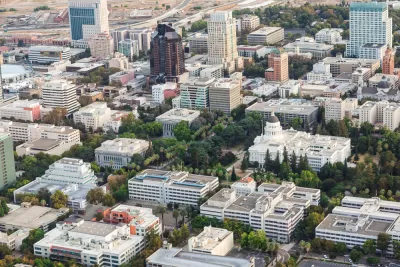The Golden State grew by 67,000 people, or 0.17%, last year, to just over 39.1 million on Jan. 1, 2024, according to a demographic report released April 30 by the California Department of Finance.

“For the first time since 2020, California has once again experienced positive population growth in 2023: driven by decreased mortality and a rebound in legal foreign immigration,” reads the first sentence of a 20-page report [pdf] released by the Demographic Research Unit of the California Department of Finance on April 30.
The report points to three reasons for the population reversal, albeit a very small increase in population:
- Legal immigration increased by 26% from 2022, resulting in a net gain of over 114,000 new residents.
- Natural increase [births minus deaths] increased as COVID deaths declined, resulting in an 11% increase from last year, an addition of nearly 12,000 children.
- “Greater domestic in-migration and slowed domestic out-migration,” i.e., the California exodus continues, but at a reduced rate.
“California’s net migration in 2023, taking into account those who come and those who leave, dropped in two years to roughly a quarter of its 2021 rate, the report shows,” wrote Bay Area News Group reporters Julia Prodis Sulek and Harriet Blair Rowan in a subscription-only article for The Mercury News on May 1. "That includes a 28% drop in the actual number of Californians who left the state, according to the Department of Finance.”
“Walter Schwarm [pdf], the Department of Finance’s chief demographer, described last year as a return to the 'old normal' before the pandemic, with deaths lessening as the pandemic eased and fewer people moving out of the state," reported Roland Li for the San Francisco Chronicle on April 30.
Not Census data
It was only a month ago when Planetizen posted, “California Exodus: Population Drops Below 39 Million,” which noted the state's population as of July 1, 2023, according to the U.S. Census Bureau.
The U.S. Census Bureau and the California Department of Finance determine population estimates differently. Sulek and Rowan explain:
The state Department of Finance uses the decennial federal census, combined with records for births, deaths, and people moving to make annual population estimates for California’s counties and cities for planning and the appropriation of funds. The state’s population estimates are for Jan, 1 of each year, while the U.S. Census Bureau’s annual estimates are for July 1 of each year.
Not enough to stem loss of congressional districts
California's congressional districts dropped by one to 52 in 2022 in the reapportionment following the 2020 Census. Related posts and blog:
- Population Losers, December 28, 2023
- Two Demographic Firsts, Both Losses, for California, May 10, 2021
- 3 Takeaways From 2020 Census Apportionment Data, April 27, 2021
Eric McGhee, senior fellow for the Public Policy Institute of California, a nonprofit state think tank, told The Associated Press on April 30, “It would still, at this rate, not be enough to probably avoid losing more congressional districts in the 2030 census.”
Finally...
Los Angeles Times columnist George Skelton, whose April 8 column, “Why Californians are fleeing this once-Golden State,” resulted in the Planetizen tag, California exodus, gets the last word
“It was bound to end,” he wrote on April 15, two weeks before the official release from the Department of Finance.
This is California, after all. Losing population defies our history. Now we’re back growing again.
He goes on to explain the reasons behind the turnaround in the growth data, as minor as it was. Watch for future posts tagged California population.
FULL STORY: State’s Population Increases While Housing Grows Per New State Demographic Report [pdf]

Planetizen Federal Action Tracker
A weekly monitor of how Trump’s orders and actions are impacting planners and planning in America.

DARTSpace Platform Streamlines Dallas TOD Application Process
The Dallas transit agency hopes a shorter permitting timeline will boost transit-oriented development around rail stations.

Congressman Proposes Bill to Rename DC Metro “Trump Train”
The Make Autorail Great Again Act would withhold federal funding to the system until the Washington Metropolitan Area Transit Authority (WMATA), rebrands as the Washington Metropolitan Authority for Greater Access (WMAGA).

Supreme Court Ruling in Pipeline Case Guts Federal Environmental Law
The decision limits the scope of a federal law that mandates extensive environmental impact reviews of energy, infrastructure, and transportation projects.

Texas State Bills to Defund Dallas Transit Die
DART would have seen a 30% service cut, $230M annual losses had the bills survived.

Bikeshare for the Win: Team Pedals to London Cricket Match, Beats Rivals Stuck in Traffic
While their opponents sat in gridlock, England's national cricket team hopped Lime bikes, riding to a 3-0 victory.
Urban Design for Planners 1: Software Tools
This six-course series explores essential urban design concepts using open source software and equips planners with the tools they need to participate fully in the urban design process.
Planning for Universal Design
Learn the tools for implementing Universal Design in planning regulations.
City of Mt Shasta
City of Camden Redevelopment Agency
City of Astoria
Transportation Research & Education Center (TREC) at Portland State University
US High Speed Rail Association
City of Camden Redevelopment Agency
Municipality of Princeton (NJ)




























